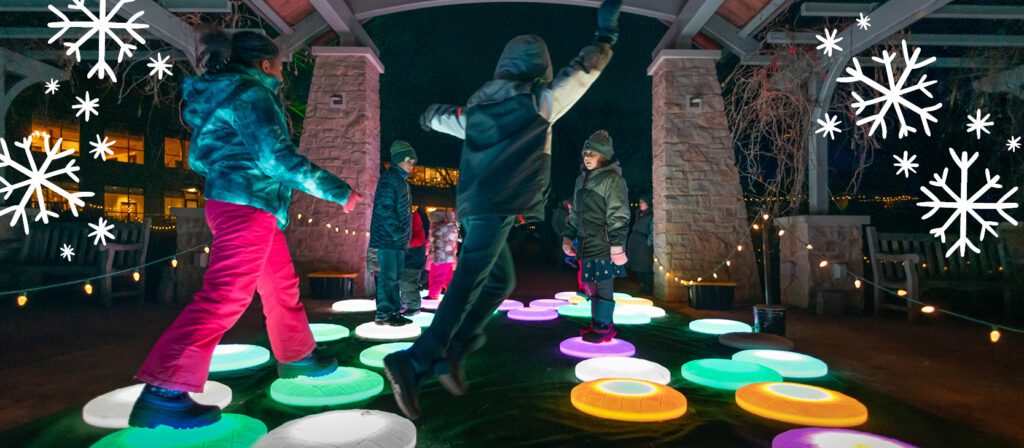One’s devastatingly acidic and the other is incredibly alkaline. Bogs and fens seem like they couldn’t be any more different, yet they often come part and parcel in the wetland world. So, what mysteries lay under the moss? Are bogs and fens actually more similar than they seem?
A Briefing on Bogs
Bogs are a very distinct type of wetland; some might even venture to call them hostile. Bogs have spongy and saturated soil rich with peat moss.2 They’re also incredibly acidic with very low oxygen levels2 which makes it hard for most life to survive. Normally, what you put in is what you get out, yet, bogs are fed by pure and balanced rainwater.2 This begs the question, what makes the water in bogs so acidic?
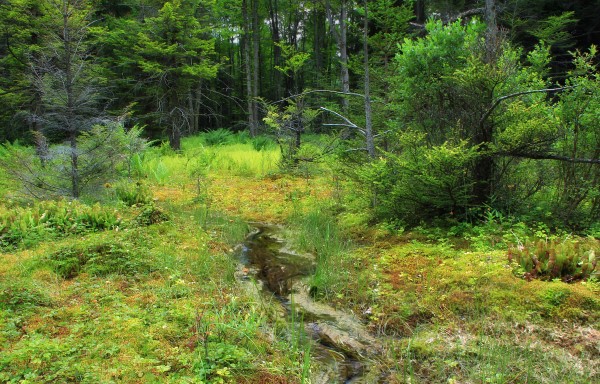
Bogs formed in land that was glaciated during the Pleistocene Epoch.2 Lucky for us, this includes areas of northern Wisconsin.4 These glaciers created depressions, and left behind water when they melted, the perfect new home for moss.2 Over centuries, moss grew to span the entire surface of the water-filled depression.2 This formed a layer like a mat composed of sphagnum growing on top of peat. Over time, it grew thicker as more and more moss completed its lifecycle, a process that continues to this day. Still, there will be a layer of open water underneath most bogs which gives them their satisfying bounce.2
Survival Against All Odds
Most plants don’t have what it takes for bog life. The acidic pH of the water, the lack of nutrients, and low oxygen are all harmful to most wetland flora.4 This acidity is actually caused by one of the most important plants in the ecosystem, the sphagnum moss.
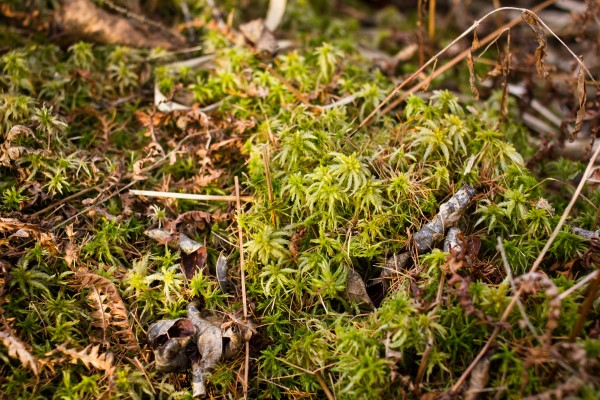

Sphagnum is like the frosting on top of the multi-layer bog cake, so falling rainwater seeps through sphagnum in its descent. Sphagnum absorbs the water and, in doing so, changes the pH to be highly acidic.2 There are, however, some sedges and woody plants that can survive in bogs.4 They don’t grow very fast because of the adverse conditions that they’re up against, but it’s not rare to see a tamarack, black spruce, or jack pine in a bog.
Bogs are also the natural habitat for cranberries! Keep your eyes peeled for an upcoming blog, “Go with the Flow: Water Agriculture in Wisconsin,” to learn all about how cranberries are grown.
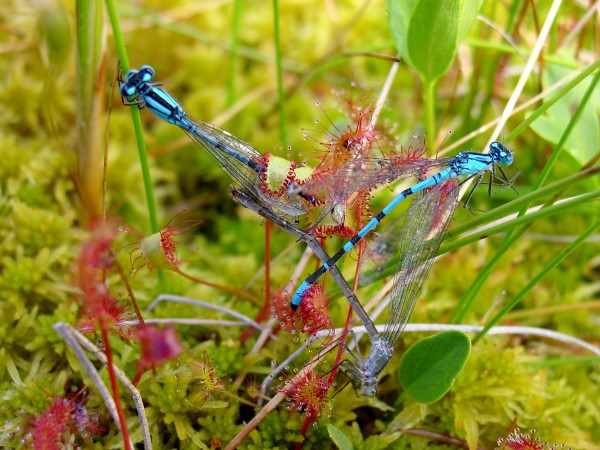

There is one category of plants that takes an alternative route to getting the nutrients they need while living in bogs. Carnivorous plants are common in bogs because their sustenance comes primarily from the insects they consume. That’s pretty metal if you ask me. In Wisconsin’s bogs, pitcher plants are common, and the rare sundew is more elusive but still present.1
Finicky Fens
As you’ll come to see, bogs and fens are a story of extreme similarities and differences. Like bogs, fens are also characterized by peat moss, but lack the sphagnum that bogs contain.5 In fact, opposite to bogs, fen soils are neutral to strongly alkaline.4 This is because fens are fed primarily by groundwater which is rich in carbonate and nutrients.5
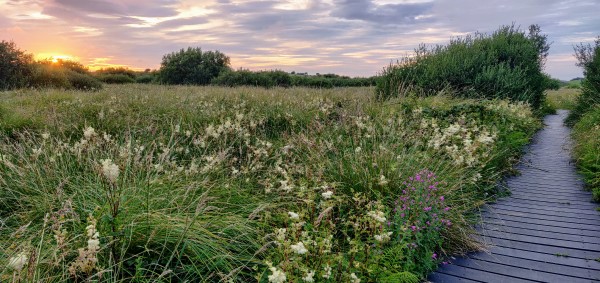

Fens also establish themselves in areas that were formerly glaciated, but only above calcareous till or bedrock.4 Fens are pretty common in southern Wisconsin, but since they only grow to be a few acres at their largest, it’s still probable that they don’t cover more than 1,000 acres across the whole state.3 They occur at the groundwater source, and contain high levels of calcium and magnesium carbonates from rock.3 This makes them another unique habitat with conditions that are far from favorable for your average plant.
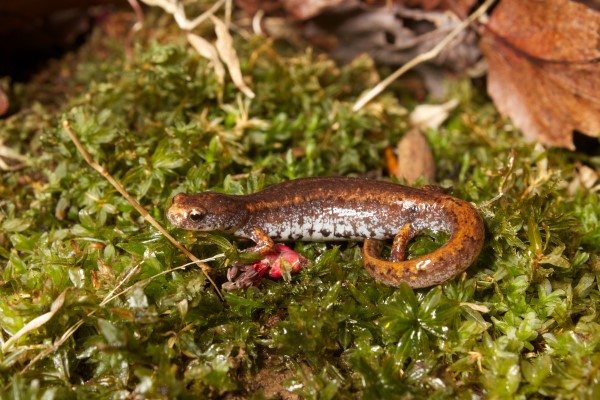

Fens often support rare flora that needs calcareous conditions to thrive. 3 Additionally, microhabitats like marl flats, small pools, spring runs, and seepages are found within fens. These uncommon spaces support even more specific rare habitat specialist species.4
Wisconsin’s Wetland Superheroes
So, bogs and fens are really weird, and they don’t really serve a purpose for the majority of flora and fauna. Still, there are a handful of ultra-rare species that couldn’t exist in any other conditions. Because bogs and fens are mostly moss, they’re also excellent at sequestering carbon.
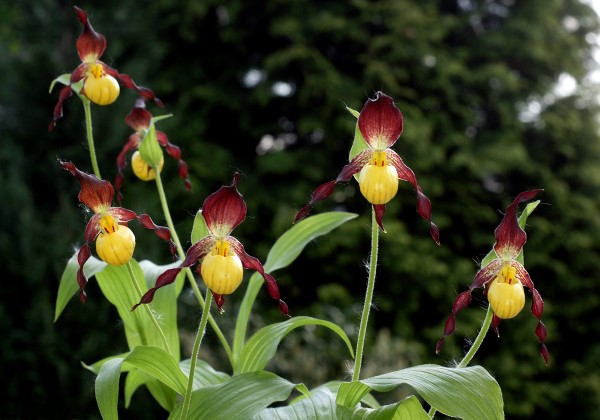

Organic material is largely composed of carbon, so as the moss in bogs and fens multiply, they capture, remove, and store carbon from the atmosphere.1 Shockingly, 200 billion tons of carbon are sequestered in the world’s peat bogs alone. So, keep an eye out for the little guys, pay attention to wetland protections being passed, and respect the bogs and fens in your neck of the woods. They’re doing us a big favor!
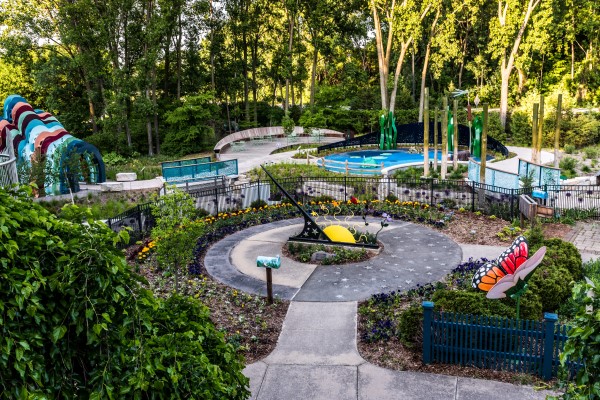

Our journey with the major wetland types is winding down, but summer’s just heating up! Visit the Fischer Family Lily Pad Splash Play area to further your understanding of Wisconsin’s wetland ecosystems, and have a fun filled day in the new Carol & Bruce Bell Children’s Garden.
Sources
- Bog.” Edited by Jeannie Evers, National Geographic, 19 Aug. 2022, education.nationalgeographic.org/resource/bog/.
- “Bog.” Encyclopaedia Britannica, www.britannica.com/science/bog-wetland. Accessed 26 June 2023.
- “Calcareous Fen.” Calcareous Fen – Wisconsin DNR, dnr.wi.gov/topic/EndangeredResources/Communities.asp?mode=detail&Code=cpher064wi. Accessed 26 June 2023.
- Epstein, E.E. Natural communities, aquatic features, and selected habitats of Wisconsin. Chapter 7 in The ecological land- scapes of Wisconsin: An assessment of ecological resources and a guide to planning sustainable management. Wisconsin Department of Natural Resources, PUB-SS-1131H 2017, Madison.
- “What Is a Fen?” U.S. Forest Service, www.fs.usda.gov/wildflowers/beauty/California_Fens/what.shtml. Accessed 26 June 2023.





